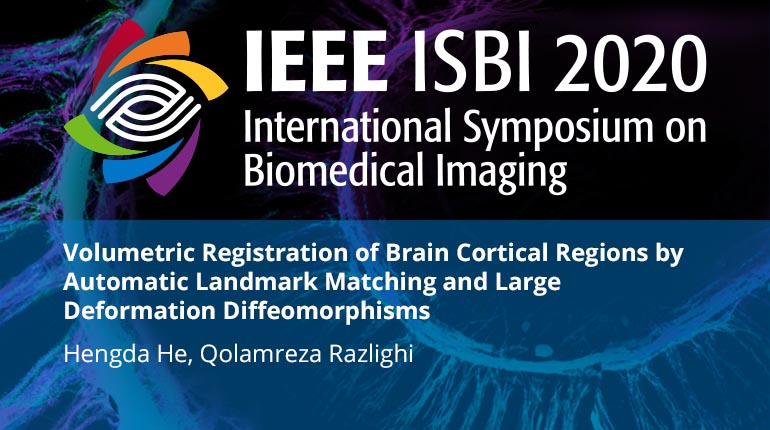
Already purchased this program?
Login to View
This video program is a part of the Premium package:
Volumetric Registration of Brain Cortical Regions by Automatic Landmark Matching and Large Deformation Diffeomorphisms
- IEEE MemberUS $11.00
- Society MemberUS $0.00
- IEEE Student MemberUS $11.00
- Non-IEEE MemberUS $15.00
Volumetric Registration of Brain Cortical Regions by Automatic Landmark Matching and Large Deformation Diffeomorphisms
A well-known challenge in fMRI data analysis is the excessive variability in the MR signal and the high level of random and structured noise. A common solution to deal with such high variability/noice is to recruit a large number of subjects to enhance the statistical power to detect any scientific effect. To achieve this, the morphologies of the sample brains are required to be warped into a standard space. However, human's cerebral cortices are highly convoluted, with large inter-subject morphological variability that renders the task of registration challenging. Currently, the state-of-the-art non-linear registration methods perform poorly on brains' cortical regions particularly on aging and clinical populations. To alleviate this issue, we propose a landmark-guided and region-based image registration method. We have evaluated our method by warping the brain cortical regions of both young and older participants into the standard space. Compared with the state-of-the-art method, we showed our method significantly (t = 117; p = 0) improved the overlap of the cortical regions (Dice increased by 57%). We concluded our method can significantly improve the registration accuracy of brain cortical regions.
A well-known challenge in fMRI data analysis is the excessive variability in the MR signal and the high level of random and structured noise. A common solution to deal with such high variability/noice is to recruit a large number of subjects to enhance the statistical power to detect any scientific effect. To achieve this, the morphologies of the sample brains are required to be warped into a standard space. However, human's cerebral cortices are highly convoluted, with large inter-subject morphological variability that renders the task of registration challenging. Currently, the state-of-the-art non-linear registration methods perform poorly on brains' cortical regions particularly on aging and clinical populations. To alleviate this issue, we propose a landmark-guided and region-based image registration method. We have evaluated our method by warping the brain cortical regions of both young and older participants into the standard space. Compared with the state-of-the-art method, we showed our method significantly (t = 117; p = 0) improved the overlap of the cortical regions (Dice increased by 57%). We concluded our method can significantly improve the registration accuracy of brain cortical regions.
 Cart
Cart Create Account
Create Account Sign In
Sign In





